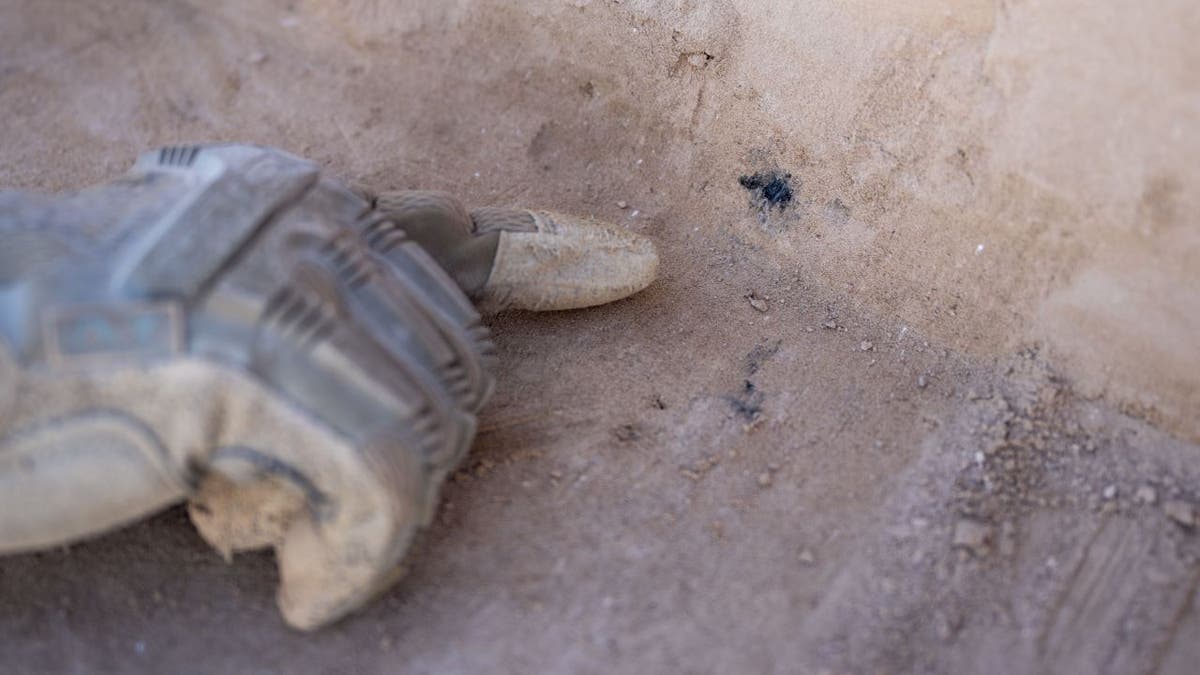-
Giants Predicted To Steal Mets’ Pete Alonso In Free Agency - 18 mins ago
-
Juju Watkins blocks Paige Bueckers and lays it up on the other end, extending USC’s lead vs. UConn - 31 mins ago
-
Former NASCAR Driver Confirms Full-Time Racing Return In 2025 - 57 mins ago
-
Tom Brady’s LFG Player of the Game for Week 16: Ravens QB Lamar Jackson - about 1 hour ago
-
Chandler Smith Secures Full-Time NASCAR Drive After Joe Gibbs Racing Exit - 2 hours ago
-
Tom Brady praises Lamar Jackson & Derrick Henry in Ravens' win vs. Steelers | NFL on FOX - 2 hours ago
-
At least 5 killed, 200 injured after car plows into Christmas market in Germany - 2 hours ago
-
Was Rickey Henderson Greatest MLB Player of All Time? Where Does He Rank? - 2 hours ago
-
Tom Brady is fired up by Ravens CB Marlon Humphrey's 37-yard pick-six vs. Steelers | NFL Highlights - 3 hours ago
-
Venturini Motorsports Announces Toni Breidinger ARCA Menards Replacement - 3 hours ago
U.S. Air Force uncovers ancient campsite on New Mexico base: ‘Marks a pivotal moment’
United States Air Force (USAF) service members recently discovered an ancient campsite that dates back over 8,000 years, according to officials.
The millennia-old ruins, which were found on Holloman Air Force Base, are believed to have been inhabited by the earliest settlers of New Mexico. USAF officials say that the 8,200-year-old campsite was discovered buried around two meters deep, according to a Mar. 21 press release.
The USAF explained that 49th Civil Engineer Squadron environmental flight members and geomorphologists – people who study how the Earth’s surface evolves – found the site back in March. The location has been named Gomolak Overlook and was found near the borders of the military base.
In a statement, 49th CES cultural resource manager Matthew Cuba said that sands from the nearby White Sands National Park buried the site over the past thousands of years.
STRANGE ROCK UNCOVERED DURING SEA SEARCH TURNS OUT TO BE ANCIENT BATTLE GEAR
United States Air Force (USAF) service members announced the discovery of an ancient campsite on Holloman Air Force Base, near White Sands National Park in New Mexico. (Airman 1st Class Isaiah Pedrazzini / U.S. Air Force)
“The formation of the white sand dunes inadvertently buried the site, with windblown silt protecting the delicate archaeological remains,” Cuba explained.
“This site marks a pivotal moment in shedding light on the area’s history and its early inhabitants.”
The campsite contained the remains of a hearth, which even included charcoal stains – a testament to how much early settlers depended on fire.
“Found on the site were approximately 70 items, ranging from flake stones to a rare example of an early ground stone, providing valuable clues about past human activities,” said Cuba.
ANCIENT SHIPWRECKS, ARTIFACTS DATING AS EARLY AS 3000 BC UNCOVERED BY UNDERWATER RESEARCHERS

Charcoal stains were found on the millennia-old hearth, according to photos by the U.S. Air Force. (Airman 1st Class Isaiah Pedrazzini / U.S. Air Force)
“We also uncovered a series of hearths, or community campsites, with remnants of mesquite charcoal which is a tremendous find in and of itself.”
The artifacts found by searchers will be studied and preserved, officials say.
“Adhering to the National Historic Preservation Act, we will ensure that all necessary steps are taken to preserve the site’s integrity while facilitating the progress of the test track project,” 49th CES environmental chief Scott Dorton was quoted as saying.
“The Department of Defense’s stewardship of vast tracts of land, including areas between White Sands National Park and Holloman, inadvertently protects numerous documented and undocumented archaeological resources,” he added. “As a result, some of the best-preserved archaeological records in the Tularosa Basin reside on DoD land.”
CLICK HERE TO SIGN UP FOR OUR LIFESTYLE NEWSLETTER

The remains of an 8,200-year-old hearth found at Gomolak Overlook. (Airman 1st Class Isaiah Pedrazzini / U.S. Air Force)
The USAF says that the discovery “offers insights into early human adaptation and environmental changes.”
“As stewards of these resources, we must ensure their preservation and documentation for future generations and ensure that cultural resources are protected while also allowing for progress and development,” Cuba said.

A ground stone was recovered at the site, believed to be over 8,000 years old. (Airman 1st Class Isaiah Pedrazzini / U.S. Air Force)
CLICK HERE TO GET THE FOX NEWS APP
Fox News Digital reached out to USAF for a statement, but did not immediately hear back.
Source link






























